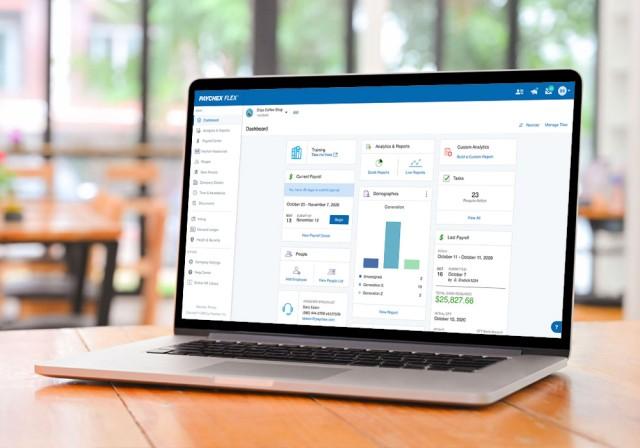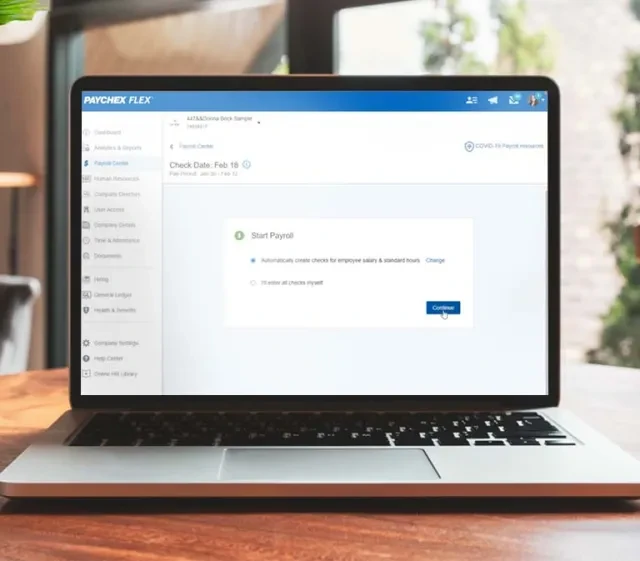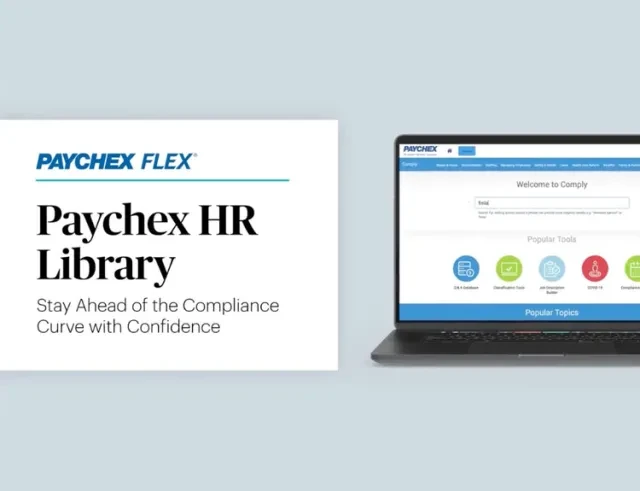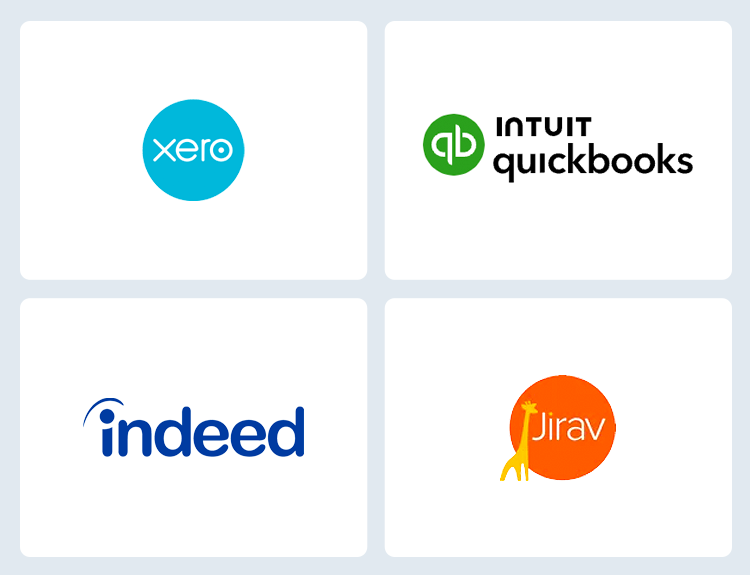
Small Business Solutions
Growing your business should always be top of mind. Let us help handle administrative burdens that take time away from your day – now and down the road.
Payroll Software Tailored to Small Businesses
Simplify Payroll, From Setup To Service and Support
Pay your people in a few clicks through easy-to-use software with flexible processing, automated tax payments, and employee self-service.

Mobile App for Employers and Employees
The Paychex Flex® App allows you and your team to stay connected to your business from anywhere.

Automated Payroll Taxes
With automated calculation, payment, and tax filing to help ensure compliance, you can stay focused on growing your business.

24/7 Support
When you need us, award-winning help is only a call, click, or swipe away with 24/7 support.

Accomplish More With Integrated Services
Process payroll, handle hiring needs, review benefits plans, and more in one seamless platform.

Time & Attendance
Track time with our modern solutions that easily integrate with payroll.

Employee Benefits
Offer Fortune 500-level benefits packages to help hire and keep workers with proactive HR support.

Workers’ Comp
Work with the Paychex Insurance Agency to help find workers’ compensation and other business coverage.

Small Business Loans
We’ve partnered with Biz2Credit® to help you find the best financing options to support your business.

Incorporation Services
Help protect your assets and add potential legitimacy to your business through incorporating.

Payment Processing
We can help you find a solution to fit your needs when collecting payments for products and services.

Small Business Funding
Uncover cash flow quickly by selling unpaid invoices to Paychex Funding Solutions.
Stay Compliant With Changing Regulations
The Paychex HR Library helps you stay informed and manage the ever-changing federal and state compliance requirements.

Add What You Need, When You Need It
You have enough on your plate, so be at ease knowing our products are built to grow as you do. With our all-in-one HR solution, Paychex Flex®, you can take care of:

Work Seamlessly Across Systems
Paychex integrations help connect and share data between Paychex Flex® and dozens of business tools while also helping you reduce manual entry errors.











